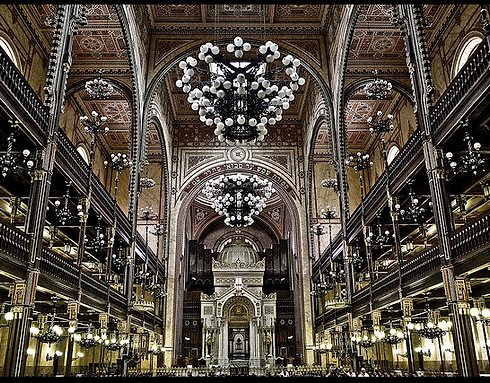Top Attractions Around
ERZSÉBET SQUARE (Erzsébet tér)
This Square is the largest green area in Budapest's inner city. The square was named after Elisabeth, 'Sisi', wife of Habsburg Emperor Franz Joseph, in 1858. In Budapest's varied history, Erzsébet tér was first renamed to Stalin in 1946 and to then to Engels in 1953, only to get its original name back in 1990.
The square's main attraction is the Danubius Fountain, located in the middle of the square, symbolizing Hungary's rivers. The fountain, built in 1880, originally stood on Kálvin tér. When Kálvin tér was rebuilt after WWII the fountain was relocated to Erzsébet tér.
Today, Erzsébet tér gives home to the Design Terminal, the former bus depot turned design center, a Bauhaus style building featuring design and fashion related exhibitions, to WAMP, Budapest's monthly design fair and to a cultural center called Akvárium. In the spring Erzsébet tér transforms into one of the nicest green spots in the city center.
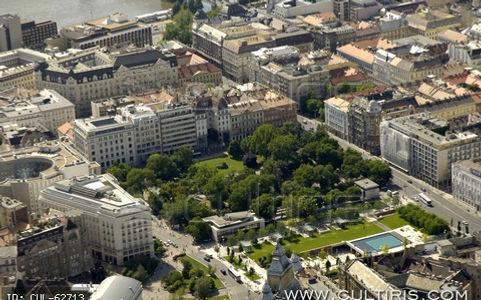
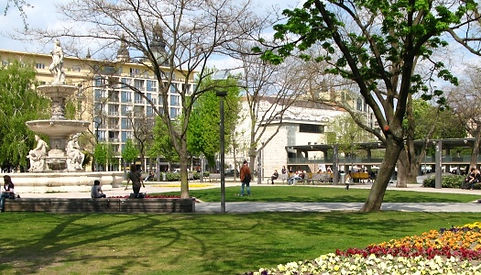
CHAIN BRIDGE
With the Buda Castle in the background, the Hungarian capital’s first bridge, now a monument, is a fascinating spectacle that has attracted many tourists to Budapest. The bridge was built upon the request of Count István Széchenyi by designer William Tierney Clark and engineer Adam Clark between 1839 and 1849. Like many other Danube bridges, the Chain Bridge did not survive the ravages of the World War, so it had to be rebuilt in 1949, marking the centenary of its first opening. Visitors also have the opportunity to walk onto the top of the tunnel located on the Buda side, offering a marvellous view of the Danube, its bridges as well as the nicest parts of Pest.
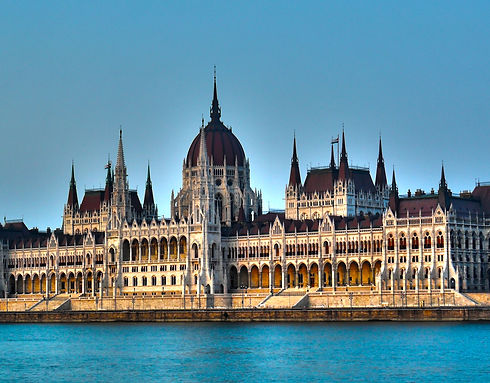
PARLIAMENT
The Parliament, built in Neo-Gothic style and located on the bank of the Danube, serves as the permanent seat of the National Assembly. The building complex, the biggest of its kind in Hungary, was erected between 1884 and 1904 on the plans of Imre Steindl. The building has 691 rooms, and it is 268 metres long and the dome 96 metres high. Since 2000, the Hungarian coronation symbols —St. Stephen’s crown, the sceptre, the orb and the Renaissance sword— have been on display in the Parliament.
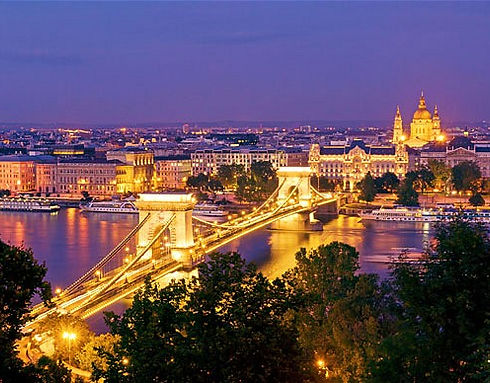
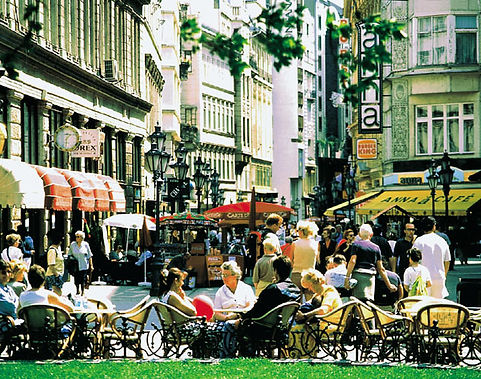
VÁCI STREET
Váci utca became a fashionable shopping street at the end of the 18th century. In the Middle Ages, the length of this street (1300 metres, just under a mile) equalled the length of the city of Pest. Today, the city council does the same: claiming that "low quality" shops do not fit into the image of Váci utca anymore, they keep increasing the rent, so that new tenants keep moving in and some others out.
Váci utca is bordered by Vörösmarty tér from the North. It's worth trying a cake at the Gerbeaud, Budapest's most famous confectioner before we walk to the south, towards Elizabeth Bridge.
ANDRÁSSY AVENUE
Andrássy Avenue is a 2,310-metre boulevard lined with buildings in uniform architecture and linking the City Centre with the City Park. Andrássy Avenue, including the Millennium Underground Railway, running beneath the surface, as well as Heroes’ Square, located at is end, was recognised as a World Heritage Site in 2002. It accommodates the crème de la crème of Eclectic-style buildings in Budapest, among them a wealth of residential houses with wonderful and intimate inner courts, statues and foundations as well as the Opera House, built on the plans of Miklós Ybl.
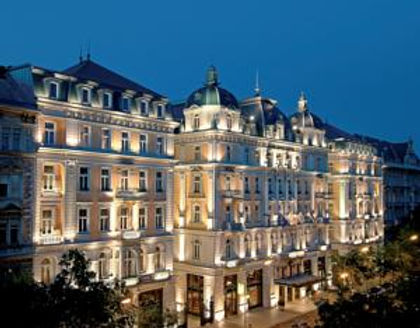
DOHÁNY STREET SYNAGOGUE
It is the second-largest synagogue in the world, and tied with the Amsterdam Synagogue, the largest in Europe. It was built between 1854 and 1859 in Romantic style, on the plans of Ludwig Förster in cooperation with Frigyes Feszl. The building consists of three spacious aisles and seats more than 3,000 people. Due to its strong Oriental style, the use of colourful mud bricks, as well as the wrought-iron structure in its interior, the Dohány Street Synagogue is notable as an architectural landmark. During World War 2, it served as the boundary of the Budapest Ghetto—a fact remembered by The Memorial of the Hungarian Jewish Martyrs, a work of sculptor Imre Varga. The Jewish Museum, holding historical, religious and cultural relics of Hungarian Jewry, is located next to the synagogue.
